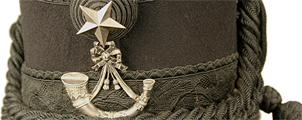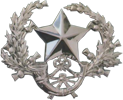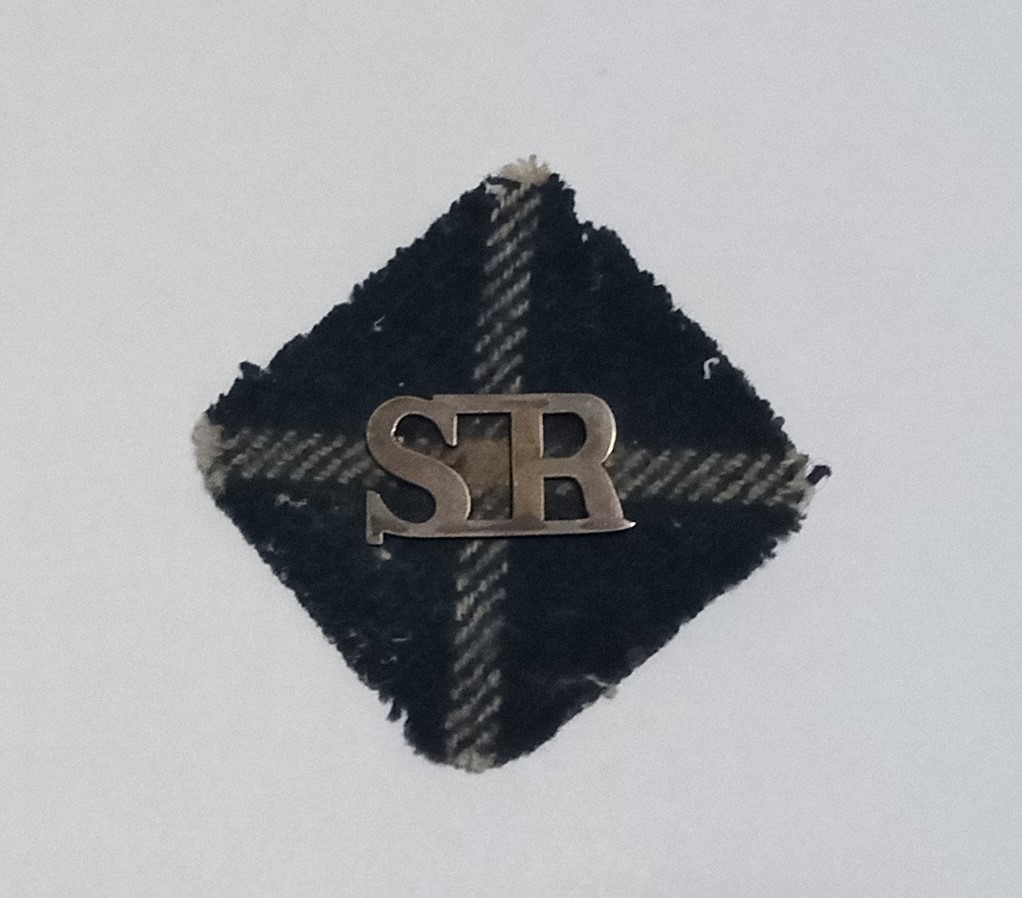A curious badge…but what is it for?
#behindthescenesMW
In line with government restrictions, Low Parks Museum was unfortunately closed to the public for much of 2020 and the first few months of 2021. During that time, museum staff were still engaged behind the scenes (and much of the time, from home); carrying on with important day-to-day tasks involved in the management and care of a museum collection, progressing new and existing projects where possible, and conducting collections-based research to better understand and interpret the objects in our care.
One such project, an audit of regimental badges, buttons, helmet and belt plates relating to The Cameronians (Scottish Rifles) revealed some fascinating objects. This badge, simple as it may be, is one such item.
This badge is labelled as a shoulder patch worn by the 10th Battalion Scottish Rifles in the First World War. The wool backing is of Douglas tartan, a pattern that has been formally associated with The Cameronians (Scottish Rifles) since 1892.[i] The metal letters “SR” (Scottish Rifles) are of a similar size to the shoulder titles worn by the regiment in the late 19th and early 20th century; however, this example appears to be of white metal (possibly silver) rather than brass and lacks the stylized full stops (.) between the letters.
While tartan badges are well known to have been worn on soldiers’ sleeves as a form of unit identification, this author has yet to find reference (written or photographic) that show this particular badge being worn in the First World War. As the only example within the regimental museum collection, it is certainly unusual.
As part of the project to audit regimental badges, an active study of regimental photographs has also been undertaken to identify contemporary images of the badges in use. This study has revealed an alternative identification of the badge shown above, however this was not from First World War period photographs, but from a photograph taken during the Second Anglo-Boer War of 1899-1902.

This photograph is from an album thought to have belonged to Lieutenant Colonel Crofton Bury Vandeleur DSO. The image was taken in South Africa, c.1901-1902, when Vandeleur, then a Captain, was seconded for service as an intelligence officer. In the photograph, Vandeleur and several staff officers are shown wearing a mixture of officers’ service dress uniform, including a khaki-coloured, peaked forage cap. This headdress was never adopted as regimental uniform by The Cameronians (Scottish Rifles) and so no regimental badge was ever produced for wear with this cap. Vandeleur appears to have overcome this by fashioning his own regimental badge, consisting of a diamond patch of Douglas tartan, with a badge of metal “SR” initials affixed to the front.
The finished ‘cap badge’ as worn by Vandeleur in this photograph appears identical to that described as a 10th Battalion shoulder patch from the First World War.
Given the simplicity of the design, it is of course possible that this configuration of patch and SR lettering was re-imagined or recycled for use in the First World War. If that were the case, hopefully other examples, or wartime photographs showing the badge worn as a shoulder patch, might present themselves in the future. If any reader is aware of such a badge in use in the First World War, we would be very pleased to hear from you.
[i] Permission for the regiment to wear Douglas tartan was granted by Queen Victoria in May 1891, but not officially adopted for use until 1 April 1892.
Comments: 1




